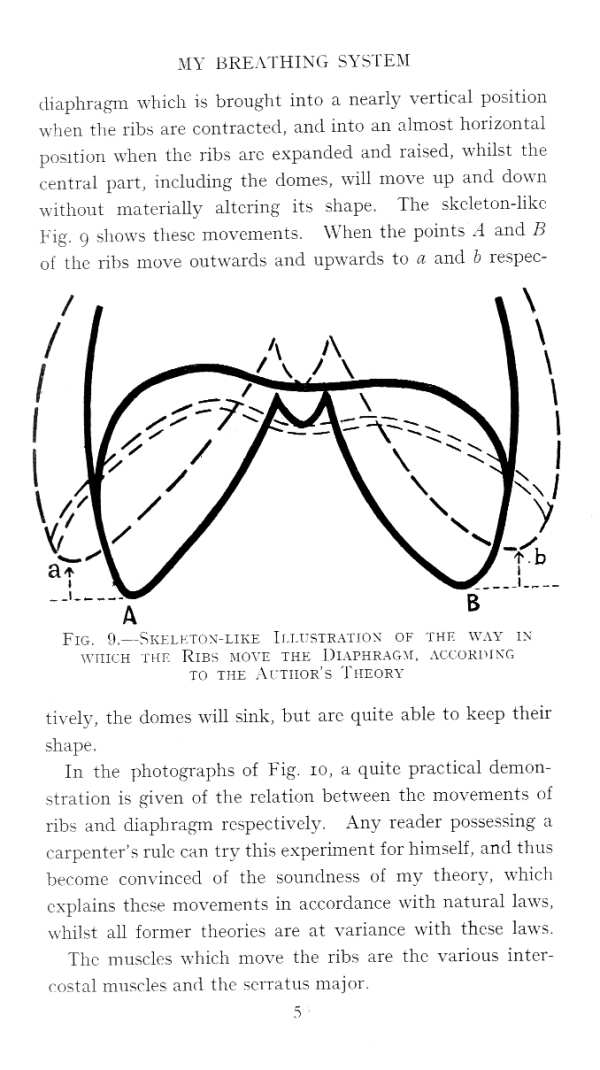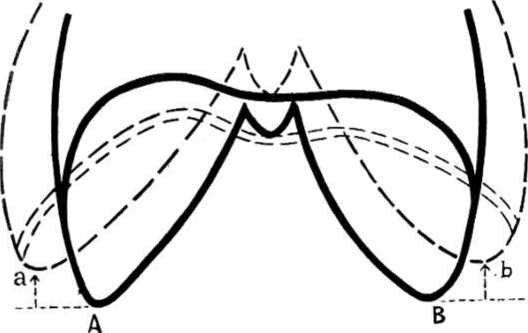43484 mbs 050

MY BREATHING SYSTEM
diaphragm which is brought into a nearly vertical position when the ribs are contracted, and into an almost horizontal position when the ribs arc expanded and raised, whilst the central part, including the domes, will move up and down without materially altcring its shape. The skcleton-likc Fig. cj shows tliesc movements. When the points A and B ol the ribs move ontwards and upwards to a and b respec-

Fig. 9.—Skj-lkton-like Ii i.cstratios of thf. way in wniCH thf Ribs moye the Diaphragm. accokimng
TO THE Al'TIIOR’s TlIEORY
tively, the domes will sink, but arc cpiite able to kecp their shape.
In the photographs of Fig. xo, a quitc practical demon-stration is given of the rclation between the movements of ribs and diaphragm respectively. Any reader possessing a carpenter’s rulc can try this experhnent for himself, and thus becomc convinced of the soundness of my theory, which cxplains these movements in accordance with natural laws, whilst all former theories are at variance with these laws.
The musclcs which move the ribs are the various inter-costal muscles and the serratus major.
Wyszukiwarka
Podobne podstrony:
mbs 049 MY BREATHTNG SYSTEM diaphragm, which, having by this timc desccnded until its central tendon
mbs 113 MY BREATHING SYSTEM diaphragmatic breathing during voluntary contraction. It should be done
mbs 109 MY BREATHING SYSTEM ice, in nice, fresh air frce from dust. Secondly, the rhythm of the move
mbs 022 MY BREATHING SYSTEM against the invasion and throw ol f thc gernis, which arc ejected with t
mbs 055 MY BREATHING SYSTEM Whcn the diaphragm is not paralysed it readily follows thc movcment of t
więcej podobnych podstron